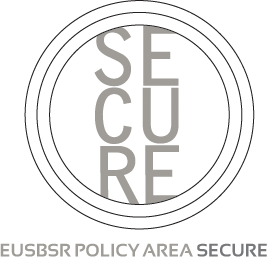About Me
Security and group are paramount. An efficient ID badge system is a straightforward yet powerful tool for making certain both. It not only helps determine employees and visitors but in addition performs a significant role in controlling access, enhancing workplace security, and promoting a professional environment. Whether you're setting up a new system or upgrading an existing one, implementing a profitable ID badge system at work requires careful planning, thoughtful design, and ongoing management.
Here’s a step-by-step guide on the right way to implement an effective ID badge system at your workplace.
1. Identify the Goal of Your ID Badge System
Before diving into the technicalities of designing and issuing ID badges, you could first determine the key objective of the system. Ask yourself what the system is meant to achieve. While identification is the primary function, your system could also embrace additional features equivalent to:
- Access Control: Limiting access to sure areas based mostly on role or security clearance.
- Timekeeping: Some ID badges can even double as time clocks for logging employee hours.
- Visitor Management: Providing a technique for tracking visitor activity and ensuring they are properly escorted within the premises.
- Employee Communication: Incorporating company branding, contact details, or other useful information on the badge.
Having a clear goal will guide your determination-making process as you move forward with the implementation.
2. Choose the Proper Technology
The next step is to determine one of the best technology to help your ID badge system. This includes deciding on the supplies for the badges, as well as deciding on the system’s functionalities. A few of the options to consider are:
- Barcodes or QR Codes: A simple and cost-effective way to encode identification information.
- RFID Cards: Ideally suited for contactless access control systems, permitting employees to easily faucet their badge on a sensor to gain access.
- Magnetic Strips: These badges are widely used for tracking access and could also double as employee time clocks.
- Smart Cards: A more sophisticated option that may carry additional data and even be integrated into other business systems like payroll or security.
Choosing the right technology depends on the level of security required and the complicatedity of the system wanted on your business.
3. Design the Badge
Design is an important aspect of your ID badge system. The badge ought to clearly symbolize your organization’s brand and in addition provide essential information in an easy-to-read format. Consider the following elements when designing the badge:
- Firm Branding: Embrace your organization brand, name, and shade scheme to take care of a professional image.
- Employee Information: The badge ought to display the employee’s name, photo, department, and job title.
- Security Features: Consider adding security options such as holograms, watermarks, or UV printing to make badges harder to counterfeit.
- Durability: Select a cloth that's durable sufficient to withstand daily wear and tear. PVC is a popular materials for ID badges as a consequence of its sturdiness and flexibility.
Make sure the design is straightforward and uncluttered while still providing all vital information.
4. Set Up Access Control Policies
A profitable ID badge system is also about controlling access within the workplace. This is particularly important in larger organizations or companies with sensitive areas. Define policies primarily based on employee roles, departments, or seniority that determine who can access particular areas. For example:
- General Access: Most employees should have access to common areas like restrooms, break rooms, and meeting rooms.
- Restricted Areas: Employees in specific departments (reminiscent of IT, HR, or finance) may have access to restricted zones like servers or archives.
- Visitor Access: Visitors ought to be issued short-term ID badges that enable them access only to designated areas, guaranteeing they're always supervised.
Access control policies ought to be communicated clearly to all employees and enforced consistently to avoid security breaches.
5. Train Your Employees
To make sure the smooth implementation of your ID badge system, train your employees on the way to use their ID badges properly. Provide guidelines on:
- How one can Wear the Badge: Make certain employees know where to wear their badge and the best way to display it visibly.
- Access Control Procedures: Explain how you can use the badge for accessing particular areas and the importance of not sharing or lending badges to others.
- Reporting Misplaced or Stolen Badges: Establish a protocol for reporting and deactivating misplaced or stolen badges immediately.
Ongoing training ensures that your employees understands and respects the system, thereby maintaining the security of the workplace.
6. Monitor and Keep the System
As soon as the system is up and running, don’t neglect about ongoing monitoring and maintenance. Commonly assessment access logs to spot any irregularities or potential security issues. Perform routine checks on the badges to ensure they're functioning properly and replace any which are damaged or outdated.
Also, be prepared to update the system when employees change roles, departments, or depart the company. This ensures that access control stays related and that outdated badges do not compromise security.
Conclusion
Implementing an ID badge system at work is a practical and efficient way to increase security, improve organizational structure, and streamline operations. By caretotally considering your needs, choosing the appropriate technology, designing person-friendly badges, setting up clear access control policies, and guaranteeing proper employee training, your small business can reap the benefits of a well-implemented ID badge system. With ongoing monitoring and maintenance, you will also be sure that the system stays a valuable tool for years to come.
Location
Occupation





